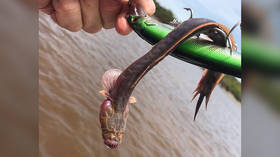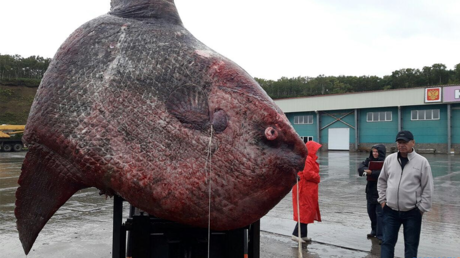‘Predator’s love child?’ Australian fisherman pulls freaky monstrous fish from the sea (PHOTOS)

A gobsmacked Australian fisherman has described a bizarre-looking sea creature, with no eyes and razor-sharp teeth, that he pulled from the ocean as “prehistoric looking.”
Fisherman Andrew Rose said the “monster” fish, that he pulled from the Mary River in Australia’s Northern Territory, looks like something he has only seen in movies.
“The lure wasn’t swimming right, I pulled it and it had this strange looking fish on it. We didn’t know what it was," Rose told the Guardian Australia.
READ MORE: Mysterious alien-like fish makes epic journey to California beach (PHOTOS)
Rose and his angler friend Tee Hokin snapped several pictures of the strange creature before releasing it back into the water. They shared the images on Facebook to try to get to the bottom of what the bizarre critter was, asking if anyone had come across such unusual marine life before.
Facebook users speculated as to what the snake-turned-monster could be, including a “baby alien” or a “predator’s love child”.
However one of the more educated guesses appeared to come fish expert Morgan Grant, who said it’s possible that it belongs to either the Eel Gobies or Worm Gobies group, “one of the least-well-known groups in Australia.”
Grant explained that this family of fish have poorly-developed eyes, are often covered in skin because they live in turbid water, and they rely on touch rather than sight to snag their prey.
Think your friends would be interested? Share this story!














